How gari is produced from cassava?
Introduction of gari
What is the function of gari? gari is a kind of tasty food made from cassava tubers. There are yellow gari and white gari. Their difference is that the yellow gari is made with palm oil added.
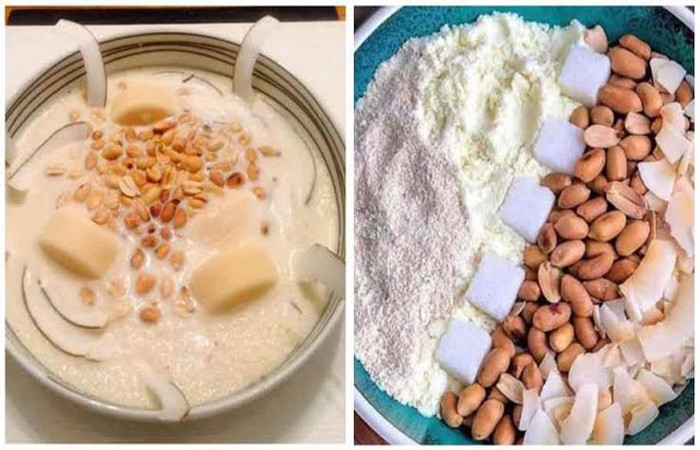 The introduction of gari
The introduction of gari
How to eat gari? On the one hand, you can eat it by mixing it in water with sugar or honey. In addition, you also can add some milk, coconut, palm kernel nuts, dry fish, groundnuts, or porridge bea ns (cowpea) to make gari more delicious. On the other hand, you can make gari to pasta, and eat it with egusi soup, okra soup, vegetable soup, etc.
How long can gari be stored?
Wrong storage method:
1) Store gari in a moist environment or leave them open in areas with high humidity.
2) Unpacking the gari to keep it in contact with the air for a long time will generate a lot of dust and bacteria.
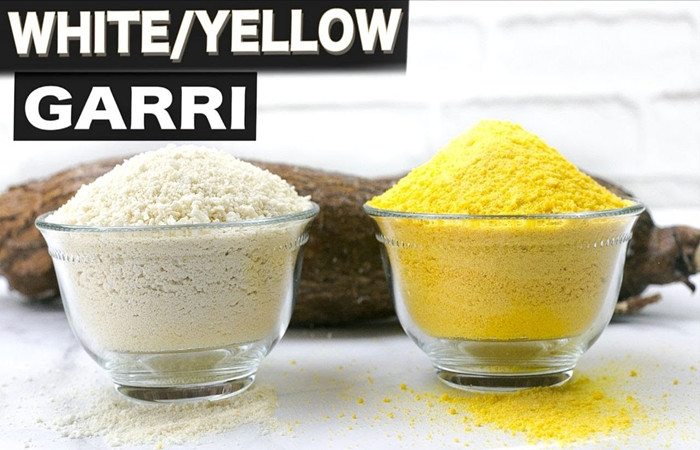 Yellow gari and white gari
Yellow gari and white gari
Correct storage method:
1) Fry or roast your gari properly to reduce its moisture content and spoilage.
2) Use airtight plastic buckets and bags to reduce air contact.
3) Store in a cool dry place.
Ohio State University's research shows that the proper producing of cassava – drying, soaking in water, rinsing, or baking effectively reduces cassava’s cyanogen content. producing cassava into gari is one of these methods.
If you want to process raw cassava into gari, you must know a series of producing steps. Without further ado, let me introduce you.
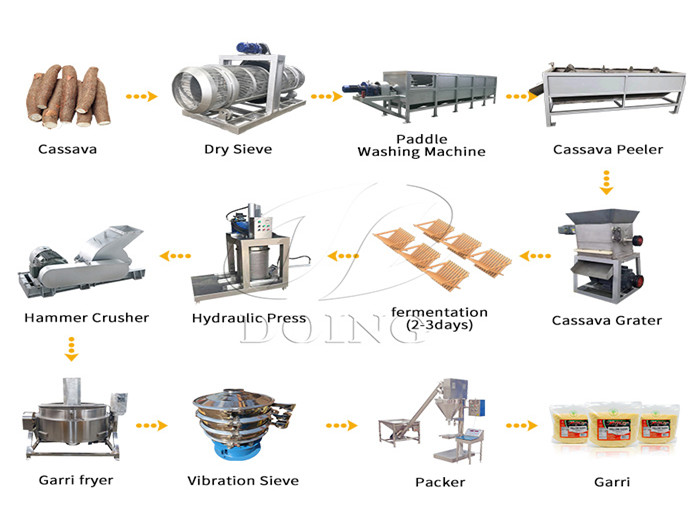 The gari processing machine
The gari processing machine
The gari producing steps include the following;
Get the best raw cassava material
Wash and clean the cassava tubers
Remove the two layers of skin from the cassava
Grind the cassava tubers into the wet mash
Pack the wet cassava mash and fermentation for 2-3 days
Dewater the moisture of cassava mash
Crush the wet cassava cake into grits
Fry the cassava grits to white gari
Sieve the gari
Pack the gari product in plastic bags and store properly
With these necessary steps, you can get gari with a special sour flavor. You can eat it directly or keep it for a long time up to 6 months. However, if you want to see more detailed production details, you can read down.
Step 1: Get the best raw cassava material
This is the first step to process cassava into gari. If you have a cassava plantation, you need to sort your cassava tubers and pick the best ones to ensure the cassava is healthy and suitable for producing gari.
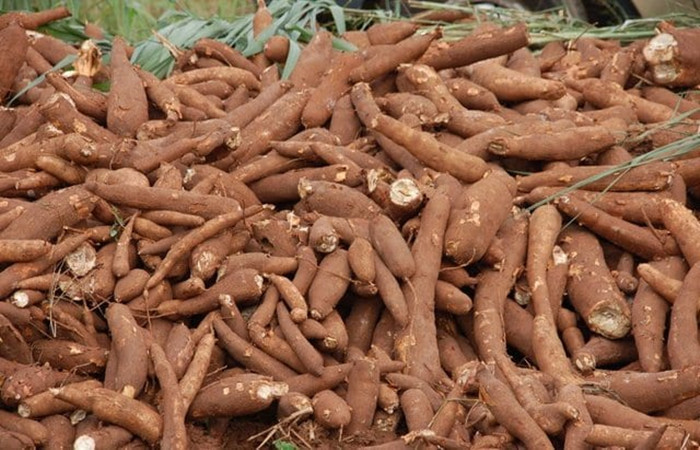 Fresh enough cassava for processing gari
Fresh enough cassava for processing gari
Step 2: Wash and clean the cassava tubers
Picked cassava tubers still have a lot of dirt and grit on them, and you need to wash them off to make sure there are no impurities in the finished cassava tubers.
Some gari producing plants have complete cassava producing machines including cassava washing and cleaning machines like a dry sieve and paddle washing machine which you can use to promote cassava washing efficiency.
Step 3: Remove the two layers of skin from the cassava
The outer skin of cassava is very hard, so both layers need to be removed to ensure subsequent production.
There is also a special gari producing machine(peeling machine)for this step. You can use it to process gari and the peeling rate can reach 95%.
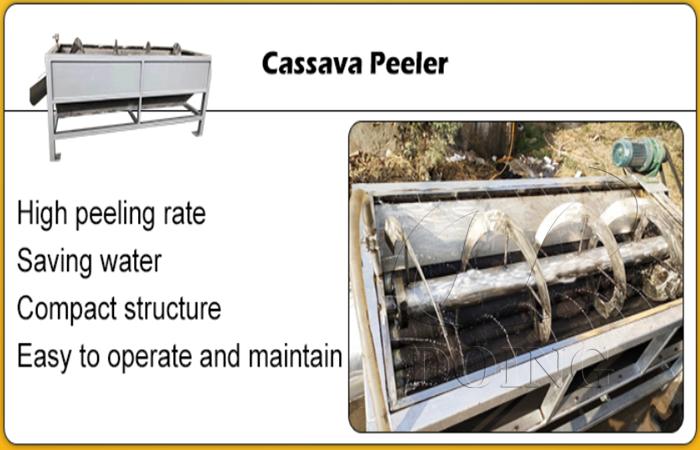 Gari machine for peeling cassava
Gari machine for peeling cassava
Step 4: Grind the cassava tubers into the wet mash
This step can remove some cyanide from cassava tubers.
The traditional way is people use a rough metal sheet to grind the cassava manual. It not only takes a lot of time and usually make severe injuries to their fingers.
The modern way is to use a cassava grinding machine which is safer and easier to operate and more efficient.
It is worth mentioning that you just need to choose stainless steel cassava grinding machine to ensure food safety and no pollution.
Caution!!! Do not put your hand into a running cassava grater or it may accidentally injure you.
Step 5: Pack the wet cassava mash and fermentation for 2-3 days
The ground cassava mash is put into bags and placed on a rack for fermentation. During this process, the natural hydrocyanic acid (HCN) in cassava tubers is gradually removed. You can control the length of fermentation according to your taste, the longer the fermentation, the stronger the sourness.
But, you must control the fermentation process properly because if you leave it to ferment for a very short period, it will result in incomplete detoxification and a bland product.
Step 6: Dewater the moisture of cassava mash
You need to dewater the moisture of cassava mash. It is not feasible by squeezing the bag of gari with your hands.
Some people use wood and strong chords to tie the bag of gari, then place a heavy stone on the bag of gari to increase the pressure to dewater cassava. This method is so slow and unhygienic that is not a suitable choice for a commercial gari producer.
Thus, you can purchase a cassava dewatering machine to dewater the moisture to reach 38-40%. Then, you need to break the dewatered cassava cake, you can choose manual crushing or machine crushing. It is convenient for future frying gari.
 The hydraulic pressing machine for processing gari
The hydraulic pressing machine for processing gari
Step 7: Fry the cassava grits to white gari
To get good quality gari, you have to control the right temperature. If the temperature is too high, the gari will be fried. If the temperature is too low, the gari will simply dry up slowly and produce a dry white powder. If you want to get yellow gari, you can add some palm oil during the stir fry.
The advice I can give you is that if you are going for mechanized gari production, you can choose a high-quality gari fryer. Not only can you choose the heating system you want, but also automatically control the temperature to ensure the quality of the gari.
 Gari fryer machine
Gari fryer machine
Step 8: Sieve and pack the gari product in plastic bags and store properly
To make sure the gari particles are evenly sized, you need to sieve the gari. A quicker way is that you can use a vibration sieve for sieving. Finally, you can put the gari in a bag for safe storage or sell them directly.
The above is the detailed steps for gari production. If you want an industrial gari producing line, we can provide you with all the machines mentioned in the article. If you have any questions about gari production equipment, welcome to consult us. [Related reading: How to purchase cassava processing machine when the budget is limited?]
contact us
- Do you want to buy machine?
- Yes, I want to buy machine
- No, I want to learn more in advance.
- What is your raw material?
- Cassava
- Potato
- Sweet potato
- Others
- 2. What is the final product you want to produce?
- Garri
- Cassava flour
- Cassava starch
- Cassava chips
- Attiekie
- Bammy
- Others
- 3.What is your capacity plan?
- Small scale garri machine
- 1ton per day
- 2tons per day
- 3tons per day
- 10tons per day
- 20tons per day
- Others
- 3.What is your capacity plan?
- Small scale
- 5tons per day
- 10tons per day
- 20tons per day
- 50tons per day
- 100tons per day
- Others
- 3.What is your capacity plan?
- Small scale
- 5tons per day
- 10tons per day
- 20tons per day
- 50tons per day
- 100tons per day
- 200tons per day
- 300tons per day
- Others
- 3.What is your capacity plan?
- Small scale
- Middle type
- Large scale
- What is your capacity plan?
- Small scale
- 5tons per day
- 10tons per day
- 20tons per day
- 50tons per day
- 100tons per day
- 200tons per day
- 300tons per day
- Others

 Call us
Call us Chat online
Chat online

